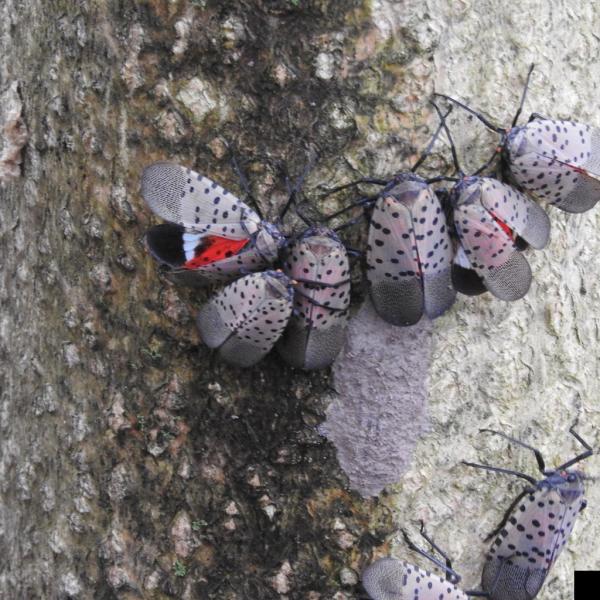
As gardening season gets underway, Vermonters are encouraged to inspect plants and outdoor items for signs of the spotted lanternfly, an agricultural pest not currently established in Vermont.
The spotted lanternfly (Lycorma delicatula) has become established in several states since it was first detected in Pennsylvania in 2014. While not harmful to people or animals, it feeds on over 70 different plants, including economically important crops (grapes, apples, hops), forest and shade trees (maple, willow, birch), and the invasive tree-of-heaven.
Quarantine Lifted in Virginia
The state of Virginia recently repealed its spotted lanternfly quarantine, which had been in place to slow the insect’s spread. This change reflects the insect’s growing range and a shift in management strategies from containment to mitigation.
With this change, it’s a good time for Vermonters to be aware of potential ways the insect could accidentally travel, especially on nursery stock, outdoor equipment, or other items coming from any area where the lanternfly is established.
What to Look For
The spotted lanternfly goes through several life stages, each with distinct characteristics:
- Egg masses: Mud-like gray or brown patches laid on flat surfaces like tree bark, rocks, vehicles, or outdoor furniture
- Nymphs: Small and black with white spots early on; later turning red with black and white markings
- Adults: About an inch long, with gray wings and black spots; bright red hindwings are visible when the insect is in flight
What You Can Do
While Vermont does not have established populations of the spotted lanternfly, early detection is key. If you think you’ve seen one or found an egg mass:
- Take a photo
- Report it on VTinvasives.org online form.
- If possible, note the location and do not move the item or insect.
Taking a few minutes to check outdoor items—especially those coming from out of state—can go a long way in supporting early detection and helping to protect Vermont’s plants and landscapes.
Learn more about spotted lanternfly
- Spotted Lanternfly Look-alikes (New York)
- Spotted Lanternfly Look-alikes (Massachusetts)
- Visitor Information Poster
- Stop the Spread SLF Poster